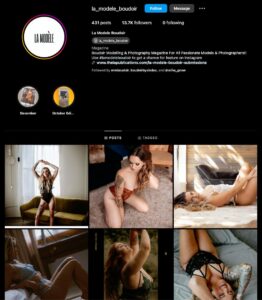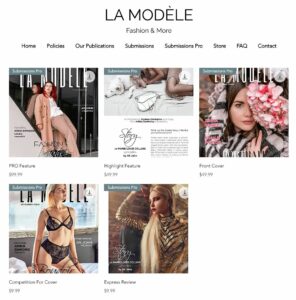You receive a direct message on Instagram, filled with compliments about your photography. It’s an invitation to contribute to a magazine, one you’ve never heard of before. Intrigued, you visit the sender’s profile and are greeted by a wall of stunning images, a tapestry of visual artistry that seems both professional and appealing.

Here lies the tantalizing offer: the chance to be a part of this attractive collection. Despite not recognizing the magazine, the prospect of being featured in a publication, especially one that presents itself so impressively, is undeniably alluring. You find yourself at a crossroads, wondering, “Should I do it? Is this the opportunity I’ve been waiting for to gain more exposure and recognition?”
This situation is the entry point into the world of vanity publications, a realm where the lines between genuine opportunity and subtle exploitation often blur. As a photographer, understanding this landscape is crucial. It’s about discerning the value, weighing the allure of exposure against the realities of what these publications truly offer.
What is a Vanity Publication?
Not all vanity publications operate by charging submission fees. A significant number of these publications market the finished product – the magazine itself – back to the contributors. The allure here is twofold: the honor of being published and the tangible product of a magazine featuring their work. This model plays into the desires of photographers to see their work in print and to own a physical testament to their creativity. However, this approach subtly shifts the focus from merit-based recognition to a transactional relationship, where the photographer’s role evolves from a content creator to a customer.

The Acquisition of Images:
Vanity publications often source their content directly from photographers, typically through social media platforms like Instagram. By scouring the internet for visually appealing content, these publications send out invitations to photographers, promising exposure and recognition in exchange for their work. The allure of being featured in a magazine often prompts photographers to submit their best shots, hoping for the visibility that might come with publication.
Crafting an Appealing Social Media Presence:
These publications strategically curate their Instagram and other social media feeds to showcase a highly polished and professional image. By selecting and featuring high-quality work from a variety of photographers, they create an aspirational aesthetic that appeals to both contributors and followers. This visually compelling presence helps in attracting more photographers to submit their work, perpetuating the cycle of content acquisition and magazine sales.
The Business Model of Vanity Publications:
The business model of vanity publications is multifaceted. While some charge photographers to submit their work, others derive income from selling the published material back to the contributors. This model capitalizes on the photographer’s desire for exposure and validation. The vanity photography market, thriving at an estimated value of $1.2 billion and growing at about 7% annually as of 2018 (source), is a testament to the effectiveness of this model. It relies not on the traditional pillars of advertising and subscription but on the aspirations and ambitions of photographers themselves.

Vanity Publications vs. Traditional Advertising-Based Magazines:
Unlike traditional magazines, which depend on advertising revenue and subscriptions, vanity publications often lack a broad audience base. The primary consumers of these magazines are the contributors themselves, limiting the scope and effectiveness of the exposure they offer. Traditional magazines curate content based on quality and audience appeal, thereby offering a more prestigious and career-advancing platform for photographers. In contrast, vanity publications’ reliance on contributor purchases often leads to a less discerning selection process, focusing more on profitability than on elevating artistic standards.
The primary consumers of these magazines are the contributors themselves,

Recognizing Vanity Publications and Their Solicitations:
Vanity publication invites can be enticing, often emphasizing the chance to be published and gain exposure. They may not always be upfront about submission fees or the expectation to purchase the published material. The key to recognizing these solicitations lies in understanding their business model. A critical examination of their past issues, the breadth of their distribution, and the transparency of their selection process can offer insights into their legitimacy and intent.
The Value of Being Published in a Vanity Publication:
The value proposition of vanity publications is a contentious topic. While they offer a platform for photographers to showcase their work, the impact on a photographer’s career is often limited. The lack of a rigorous selection process and the primary audience being other contributors dilute the prestige and recognition typically associated with being published. The cost, both in terms of submission fees and the purchase of the magazines, can outweigh the benefits, especially if the publication lacks a significant audience beyond its contributors.
Usage Rights and Publication Agreements:
A critical aspect to consider is the usage rights and terms required by these publications. Photographers must be diligent in reading the fine print of any publication agreement. Some vanity publications may require broad usage rights, potentially including the right to use the images in future marketing materials, resell them, or distribute them in ways beyond the scope of the magazine itself. This can lead to photographers unknowingly giving away more rights to their work than intended, which might restrict their ability to use or sell their images elsewhere. There may also be fees for retracting your submission or for not submitting the proper documentation. It’s vital that you read before you submit.
Photographers must be diligent in reading the fine print of any publication agreement.
Conclusion:
Vanity publications present a complex landscape in the world of photography. While they offer an avenue for photographers to see their work in print, the real value they provide in terms of career advancement and exposure is debatable. Photographers must carefully evaluate the potential benefits against the costs and the nature of the exposure offered. Understanding the nuances of these publications is key to making informed decisions about where and how to showcase one’s work.
